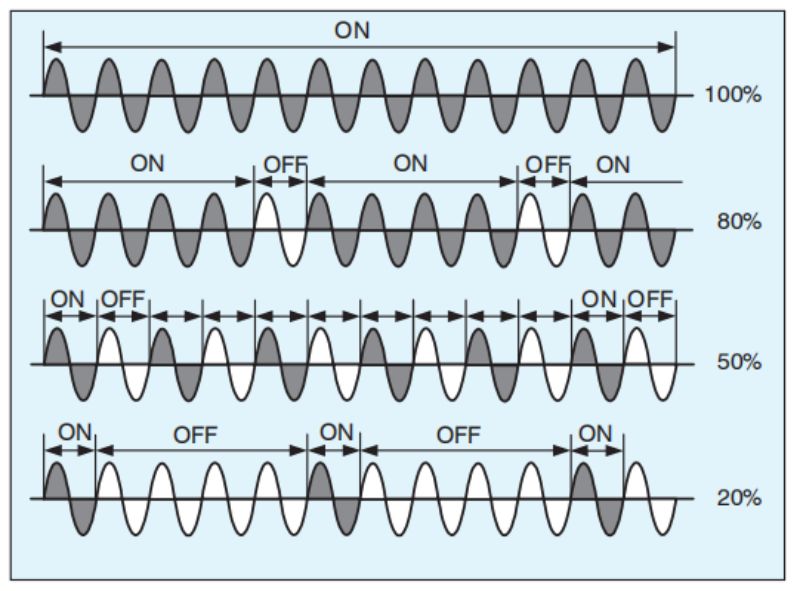Zero-crossing control is a very common way to control the power regulator , especially when the load is the resistive type.
The thyristor is turned on or off when the voltage is zero, and the power can be adjusted by adjusting the ratio of the thyristor on and off time. Zero crossing control mode we could divided into fixed period zero crossing control and variable period zero crossing control two ways.
Fixed period zero crossing control mode (PWM zero crossing):The fixed-period zero-crossing control mode is to control the average power of the load by adjusting the on-off duty cycle in a fixed period. Because it is switched on and off at the zero point of the power supply, in the unit of full wave, no half wave component, it will not produce high-frequency interference, and the power factor can be reached, so it is very power-saving.
Variable period zero crossing control (CYCLE zero crossing):The variable period zero crossing control mode is also on-off control at the zero crossing of the power supply. Compared with PWM mode, there is no fixed control period, but the control period is shortened as much as possible, and the frequency is evenly divided according to the output percentage within the control period. Also in full wave as a unit, no half wave component, can reach the power factor, but also save electricity.
From the figure below, we can see very clearly that under the zero-crossing control mode, in order to adjust the output power of power regulators , we can achieve the purpose of controlling the power by adjusting the number of cycles of SCR on and off, which is very simple. However, we will also see that the frequency control is only suitable for occasions where the control accuracy is not high, if the control requirements are high, then the frequency control method is not suitable.

Post time: Dec-22-2023
